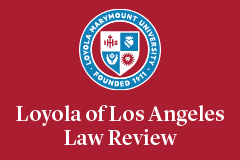Abstract
Both criminal and tort law seek, in part, to respond to the harm inflicted on persons' organic, human, continuous bodies, through hitting, offensive groping, rape, stabbing, gunshots, vehicular homicide, and more. But could there be such a thing as assault and battery on a person's inorganic, non-human, discontinuous body? A battery on one's prosthetic arm, on one's wheelchair, on one's cochlear implant? Even a battery on one's iPhone or computer, which some users have provocatively begun to call an "exobrain"? This Article investigates whether there is any use in employing metaphors such as "exobrain," "battery on a wheelchair," and the like.
It first demonstrates that the metaphors are not entirely fanciful because the social, as opposed to pre-social, body is the body that matters, and the social body extends beyond organic, human, continuous material to inorganic, non-human, discontinuous entities. An assessment of the variables that lead one to decide whether an object is or is not part of the social body yields no clear-cut test.
The Article then explores what is gained, and potentially lost, by calling an iPhone an "exobrain," rather than merely a "very important piece of property." The author concludes that this rhetoric holds the promise of helping us recognize and remedy underappreciated injuries, but that it also bears the risk of reifying a cramped conception of the body, and of what injuries count.
Recommended Citation
Gowri Ramachandran,
Assault and Battery on Property,
44 Loy. L.A. L. Rev. 253
(2010).
Available at: https://digitalcommons.lmu.edu/llr/vol44/iss1/10


